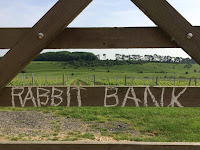ICCWS 2016, Tirage, Apprentices, Export and Harvest Prep
We are all recovering from the fantastic few days we spent at the International Cool Climate Wine Symposium held in Brighton at the end of May. Nearly 600 delegates and speakers from across the cool and not-so-cool winemaking regions of the world descended on the seaside city more renowned for its vibrant nightlife than winemaking.
We all took advantage of the nightlife and enjoyed some fantastic evening events in the Brighton Museum and the Sealife Centre. For many of the visitors the opening reception was the first time they had tried English wine and we were pouring our Hattingley Valley Classic Cuvee 2013 which went down a storm.
The information and research presented was invaluable to us as an emerging cool climate wine region. Some dry topics such as 'Combating Botrytis' and 'Protected and Semi-Protected Viticulture' were balanced with rather more pleasant tastings of English Sparkling Wines presented by Essi Avellan MW and English Still Wines presented by the indomitable Oz Clarke (chaired by yours truly).
 |
| Emma Rice with Oz Clarke - English Still Wine Tasting |
Back to the real world and the task in hand this week is getting the winery and wines ready for bottling. Cold stabilisation and filtering is done, the bottles are arriving 26,000 at a time. The crown caps, yeast, adjuvants and stillage cages are here. The winery is being cleaned down to the last drain cover and the sugar is being prepared to be mixed into the base wines.
 |
| Fondoirs, ready for the sugar |
 |
| Bottles, cages and more bottles |
Looking forward to October (which seems frighteningly close), walking the vineyards with Jim and Rom, we are already revising down our estimations on the potential yield thanks to the infamous frost of 27th April. We saw some serious damage to our Chardonnay as the buds were just peaking out, whilst the Pinot Noir and Pinot Meunier escaped the worst of the cold by being slightly behind their white cousin. Some of the vines pushed through their second buds but others were completely decimated. To add insult to injury the buds that did survive were then battered by five episodes of hail in one day, thankfully isolated to a few small patches but galling nonetheless.
What is left (by far the majority) is now doing very well having had a couple of weeks of wonderful sunshine. Battening down the hatches this week though thanks to the rain showers so typical of an English June.
 |
| Rabbit Bank Vineyard in the Test Valley |
 |
| Telehandler action at harvest |
Samples of our wines have been sent to Australia with a view to export. Scandanavia can't get enough of our bubbles, Germany, Japan and the USA have all taken substantial deliveries with more on their way. Prowein Dusseldorf and ProWine Singapore have both reaped new export markets for us
Immediately after bottling we start interviewing the vintage cellar crew - done by Skype as most of them are finishing off vintage in the southern hemisphere or travelling somewhere exotic en route back to the North. Then we start preparing ourselves for the next onslaught of grapes - this time with the Champenois looking over our shoulders....
Bring on VINTAGE 2016.






